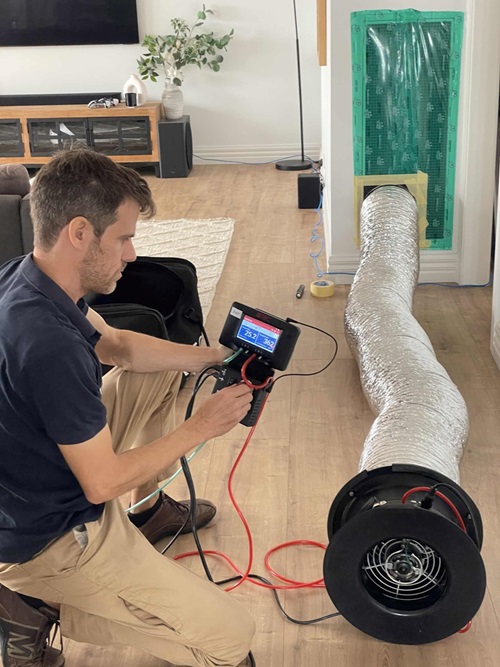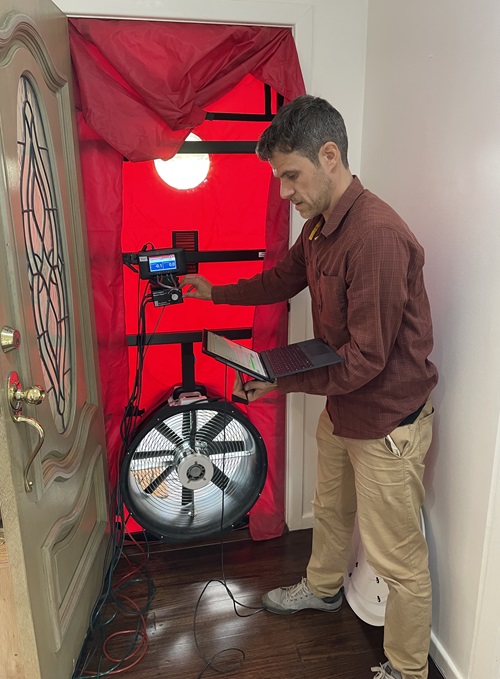New research from CSIRO, Australia’s national science agency, has revealed new Australian homes are up to 50% more airtight than those tested in 2015.
Homes that meet recommended air tightness levels have lower energy bills and healthier indoor air quality, with the study also identifying the factors – and rooms – that caused leakages in most new homes.
This is good news for homeowners, as houses and apartments that meet recommended air tightness levels are more comfortable, have lower energy bills and healthier indoor air quality.
Air tightness minimises unintended air movements within a building, preventing outdoor air from entering and indoor air from escaping.
Poor air tightness can cause draughts, increasing energy bills by up to 20%.

Researchers tested a total of 233 apartments and detached houses built in the last four years in Melbourne, Sydney Canberra, Brisbane and Adelaide. Image: CSIRO
Conversely, homes that are too airtight without controlled ventilation can lead to condensation, mould and health issues for residents such as headaches and nausea from higher carbon dioxide and monoxide levels.
Researchers tested a total of 233 apartments and detached houses built in the last four years in Melbourne, Sydney Canberra, Brisbane and Adelaide. Homes specially designed for air tightness were excluded.
While the research results were positive and compare well to standards in other countries like the UK, the study found room for improvement.
Senior Experimental Scientist and Project Lead Michael Ambrose said the research used a blower door test to identify the leakage rate and determine where leakages occur.
“Leakages were found in most new homes, mainly from bathroom fans, sliding doors and poor or missing door seals,” Ambrose says.
“Some other homes, particularly apartments, were found to be extremely airtight, which can result in issues impacting building performance and resident health, if controlled ventilation is not included.
“Fortunately, there are simple and affordable ways to rectify these issues and preventative measures that can be implemented during construction."

Researchers conducting a blower door test to identify leakage rate, and determine where leakages occur. Image: CSIRO
The report outlined a range of recommendations for Australian building codes to address common air tightness issues, including establishing air tightness standards in the National Construction Code (NCC), requiring controlled ventilation in new buildings, particularly apartments to reduce indoor pollutants and moisture, making air barriers, such as building wraps mandatory in all new residences and providing on-site training and educational resources to connect builders with cost-effective solutions that improve building performance.
The study, funded by the Department of Climate Change, Energy, the Environment and Water (DCCEEW) found that actual air tightness levels were closely aligned with those assumed by the Nationwide House Energy Rating Scheme (NatHERS), which provides an energy efficiency star rating for residential buildings.
“This provides us with strong confidence that NatHERS is accurately predicting air tightness within specified levels,” Ambrose says.
“We see value in displaying air tightness values on NatHERS certificates and noting the impact on the star rating.
“But overall, our research found that new Australian homes are performing better than ever before."

